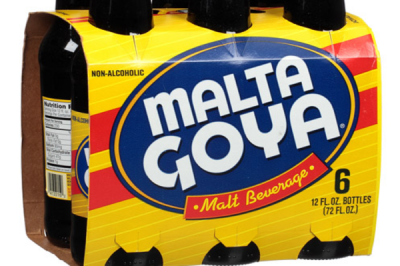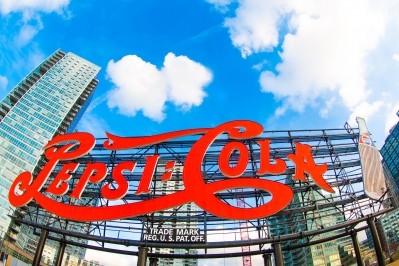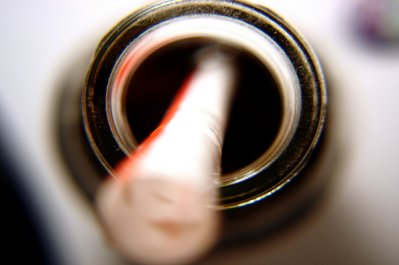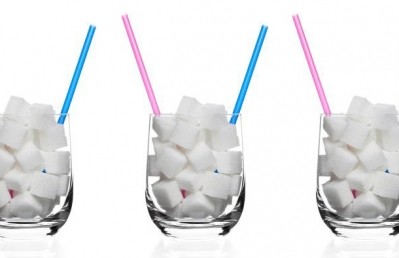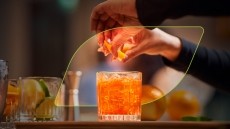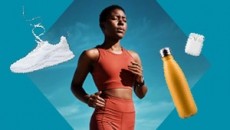ABA HITS BACK: 'CARAMEL COLORING HAS BEEN USED FOR DECADES AND IS SAFE'
Study suggests 4-MEI in soft drinks presents 'avoidable and unnecessary' cancer risk
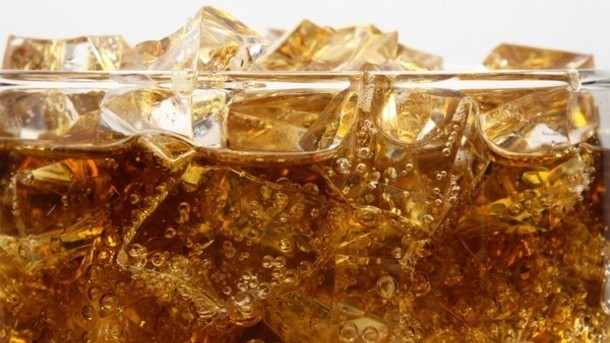
Keeve Nachman (an assistant professor at John Hopkins Bloomberg School of Public Health) and colleagues say that legislation could be used to cut the population’s exposure to what they say is a potential carcinogen, and suggest intervention from the FDA (US Food and Drug Administration) to help reduce cancer risk.
However, the FDA's official position remains as follows: "Based on the available information, FDA has no reason to believe that there is any immediate or short-term danger presented by 4-MEI at the levels expected in food from the use of caramel coloring."
That said, the agency is currently reviewing available safety data on 4-MEI and is "reassessing potential consumer exposure to 4-MEI from the use of Class III and Class IV caramel coloring in food products".
According to the FDA website, this safety analysis will help FDA determine what, if any, regulatory action needs to be taken. "Such actions could include setting a limit on the amount of 4-MEI that can be present in caramel coloring. However, in the interim, FDA is not recommending that consumers change their diets because of concerns about 4-MEI," the FDA states, here.
PepsiCo has hit back at the study for containing outdated information - saying its products meet stricter Californian standards country-wide.
Goya Foods, which manufacturers Malta Goya, also told BeverageDaily.com that the information reported in the study is outdated, and that all its products meet federal and state requirements and laws.*
4-MEI...Is it a carcinogen?
In the study published in the online journal PLOS One, the researchers estimated people’s exposure to caramel colorant 4-MEI (a potential carcinogen) from soft drinks, and modeled the potential cancer burden.
They found that some products in California - where legislation requires beverage companies to display a health warning label if 4-MEI exceeds a certain level - had lower levels of 4-MEI than those in other states.
Caramel color is common ingredient in many soft drinks. It is produced using ammonium compounds, which can result in 4-methylimidazole (4-MEI) as a byproduct. The researchers say the color is used "simply for aesthetic purposes".
In recent years, evidence for the carcinogenicity of 4-MEI has raised concerns in some quarters about uses of caramel color type III and IV.
As a result of the 2007 study mentioned above by the US National Toxicology Program, the International Agency for Research on Cancer classified 4-MEI as "possibly carcinogenic to humans" (but only animal, not human, data was available).
THE GEN ON...4-MEI
What about studies that show 4-MEI to be a carcinogen?
In 2007, the National Toxicology Program (NTP) issued a report summarizing the results of toxicological testing conducted on 4-MEI in rats and mice. A 2-year study in rats was inconclusive regarding carcinogenicity, but a 2-year mouse study showed an increased incidence of certain lung tumors. These NTP studies were conducted in rodents at levels of 4-MEI that far exceed current estimates of human exposure to 4-MEI from the consumption of Class III and Class IV caramel coloring in food products such as colas.
How do I know whether food products contain caramel coloring?
Foods containing added colors must list them either by name or as 'artificial colors' in the ingredients statement on the food label. Because there are other artificial colors, the presence of 'artificial colors' on a food label does not necessarily mean that caramel coloring is contained in the food. Also, the presence of 'caramel coloring' on a food label does not necessarily mean that the food contains 4-MEI, because the term 'caramel coloring' also may be used to describe Class I and Class II caramel coloring. Class I and Class II caramel coloring do not contain 4-ME
Malta Goya and Pepsi beverages in study spotlight
The current study by Keeve Nachman et al. took a 2014 analysis of 4-MEI concentrations across 11 different soft drinks; the scientists estimated exposure to 4-MEI from caramel-colored soft drinks; and then modeled the potential cancer burden.
“Based on 4-MEI concentrations observed in beverage samples from this study, it appears that 4-MEI exposures associated with average rates of soft drink consumption pose excess cancer risks exceeding one case per 1,000,000 exposed individuals, which is a common acceptable risk goal used by some US federal regulatory agencies,” wrote Nachman, senior author of the study.
“Specifically, consumption of Malta Goya, Pepsi, Diet Pepsi and Pepsi One resulted in 4-MEI exposures with associated risks exceeding one excess case per 10,000 exposed individuals, suggesting that the risk can greatly exceed this threshold.
“This is the first study to estimate 4-MEI concentrations in common soft drinks as well as corresponding cancer risks and burdens.”
California lawmakers mark 4-MEI as carcinogen in 2011
The previous 4-MEI study in 2007 by the US NTP concluded there was "clear evidence of carcinogenic activity" in male and female mice.
“FDA officials have suggested that highly unrealistic soda consumption (i.e. 1,000 cans per day) would be required to achieve the 4-MEI exposures that induced cancer in toxicological studies, implying the existence of an exposure threshold for carcinogenesis,” said Nachman.
In 2011, California’s Safe Drinking Water and Toxic Enforcement Act (more commonly known as Proposition 65) added 4-MEI as a carcinogen. Products must carry a warning label if exposure to the chemical from the product exceeds a certain level. Following the legislation, leading soft drink manufacturers announced they would lower 4-MEI concentrations.
Nachman’s et al.'s new study found ‘marked differences’ in 4-MEI concentrations between California (covered by Proposition 65) and New York (which has no similar regulation).
“With one exception (Malta Goya, where concentrations were consistently high and did not vary by time and location), 4-MEI concentrations in beverages were always considerably elevated in samples purchased in the New York area compared to those purchased in California,” he said.
“This difference was striking even in light of the limited number of samples tested. This supports the notion that Proposition 65 and, potentially, other state-level interventions can incentivize manufacturers to reduce foodborne chemical exposures and associated risks among consumers.”
The authors acknowledge that their estimates assume 4-MEI exposure comes from beverages, and not from additional sources.
“As shown here, a variety of beverages contain 4-MEI at levels of public health concern and individuals may consume more than one beverage type,” Nachman said. “Additional exposure pathways may include other beverages like beer and blended whiskey, foods like baked goods, gravies, and sauces and secondhand smoke.”
‘Regulation to eliminate unnecessary 4-MEI exposures may be needed’
“Even considering the impact of Proposition 65 on 4-MEI concentrations in beverages, it is worth noting that the NSRL [No Significant Risk Level] established by OEHHA corresponds to a risk of one cancer per 100,000 people exposed,” he added.
“Given that a sizable fraction of the U.S. population consumes these beverages, and high consumption by some persons, a substantial cancer burden may persist even if exposures are reduced to the NSRL nationally.
“Accordingly, federal regulation to eliminate unnecessary 4-MEI exposures may be needed. An FDA intervention, such as maximum levels for 4-MEI in beverages, could be a valuable approach to reducing excess cancer risk attributable to 4-MEI exposure in the US population.”
ABA insists caramel coloring is safe
However, the American Beverage Association's (ABA's) senior director for public affairs, Christopher Gindlesperger, insisted caramel coloring was safe.
"Caramel coloring has been widely used in the food supply for decades, including in soy sauce, molasses, coffee, colas, desserts, dark beer, wine and many other foods," he told BeverageDaily.com.
"Leading regulatory and public health organizations around the world have repeatedly confirmed its safety, including: U.S. Food and Drug Administration (FDA), European Food Safety Authority (EFSA) and Health Canada. In fact, the FDA has noted that there is no reason at all for any health concerns and that as a consumer you ‘would have to drink more than a thousand cans of soda in a day to match the doses administered in studies that showed links to cancer in rodents.'"
We were waiting for a comment from PepsiCo at the time of writing.
*Additional reporting by Ben Bouckley; Malta Goya response added on February 25.
Title: ‘Caramel Color in Soft Drinks and Exposure to 4-Methylimidazole: A Quantitative Risk Assessment’
Authors: Smith, T.J.S.; Wolfson, J.A.; Jiao, D.; Crupain, M.J.; Rangan, U.; Sapkota, A.; Bleich, S.; Nachman, K.E.
Source: PLOS One, February 18 2015. DOI: 10.1371/journal.pone.0118138
